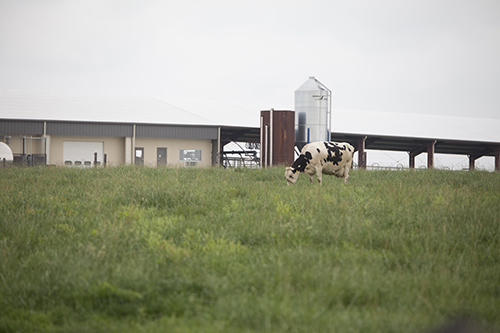
Farmers have one guarantee: change. Farming, more than almost any other profession, is at the mercy of Mother Nature's musings. As we enter what is expected to be a warmer than average winter for the northern part of the country, we are reminded of the ups and downs of the climate and its effects on farms' pocketbooks.
Research conducted by the University of Connecticut in conjunction with the University of Talca, Chile and the University of Wisconsin-Madison examined the effects of climate conditions in Wisconsin from 1996 to 2012 on dairies' economic productivity. They found a negative association between climatic change effects and dairy farm financial welfare during the seventeen-year period. Researchers then applied their findings to climate change predictions for 2020 to 2039.
The results were grim. Researchers found that a 1.8°F rise in temperature would result in a 4.5 percent reduction in economic output during summer and a 3 percent reduction during autumn on average. On the other hand, that same temperature change in spring would result in an average 0.8 percent rise in financial productivity, and during winter, a 1.8 percent rise in productivity.
The percent change in economic output was measured as a comparison of 2012 output levels. For the years 2020 through 2039, dairy output ranged from 25 percent lower than 2012 levels to 5 percent higher. These predictions were run for both moderate and severe climate change predictions. As expected, severe climate change predictions showed more intense negative productivity than moderate climate change predictions.
The study also looked into the effects of precipitation on farm financial welfare. Findings showed an upswing in precipitation led to lower dairy productivity in spring and winter while it didn't affect output in summer and autumn.
These forecasts suggest heat abatement strategies will be increasingly important in northern dairy states. Dairies will also continue to be asked to become more efficient and more productive without the help of Mother Nature. With all that in mind, we'll buckle down and keep doing what perhaps our industry is trained as well as any to do, absorb change.

The author is the Special Publications editor. She is responsible for development and marketing of books and plans, as well as coordinating internal communication pieces. Maggie was raised on a 150-cow dairy near Valley Center, Kan. and graduated from Kansas State University with degrees in agricultural communications and animal sciences.







